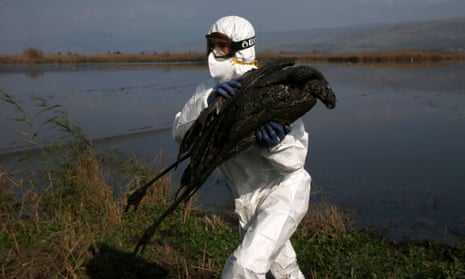The UK and continental Europe have been hit by an “unprecedented” number of cases of avian flu this summer, with 47.7m birds having been culled since last autumn, according to new figures.
Poultry producers from as far north as Norway’s Svalbard islands to southern Portugal have together reported almost 2,500 outbreaks of the disease since last year.
There have also been thousands of outbreaks recorded in wild birds, according to the latest update from the EU’s European Centre for Disease Prevention and Control, European Food Safety Authority and the EU reference laboratory. The virus reached breeding colonies of sea birds on the north Atlantic coast, killing huge numbers.
In past years, outbreaks of avian flu declined with warmer weather and the end of migration by wild birds in the autumn and winter.
But outbreaks have continued across the UK and elsewhere in Europe this summer leading to fears that highly pathogenic variants of avian flu are now endemic in wild birds, creating a risk of infection all year.
From June to September, the number of outbreaks in domesticated birds was more than five times higher than the same period last year. Experts say all kinds of bird species have become infected now, causing the virus to remain.
Outbreaks have also crossed the Atlantic Ocean, spreading from Europe to North America along migration routes and leading to millions of poultry being culled in the US and Canada.
Disease experts say outbreaks could get even worse this winter.
“As autumn migration begins and the number of wild birds wintering in Europe increases, they are likely at higher risk of HPAI [highly pathogenic avian influenza] infection than previous years due to the observed persistence of the virus in Europe”, said Guilhem de Seze, head of risk assessment at the European Food Safety Authority.
Year-round infections in the UK and Europe could force free-range chickens to be housed indoors.
Veterinary trials to test bird flu vaccines have started in France and the Netherlands, but there are question marks around the effectiveness of vaccinations against avian flu and whether vaccinated birds can still spread the disease if they are infected.
The European Commission has said it wants to allow eggs produced in the EU to be labelled as “free range” even if birds are kept inside.
Sign up for the Animals farmed monthly update to get a roundup of the biggest farming and food stories across the world and keep up with our investigations. You can send us your stories and thoughts at animalsfarmed@theguardian.com
